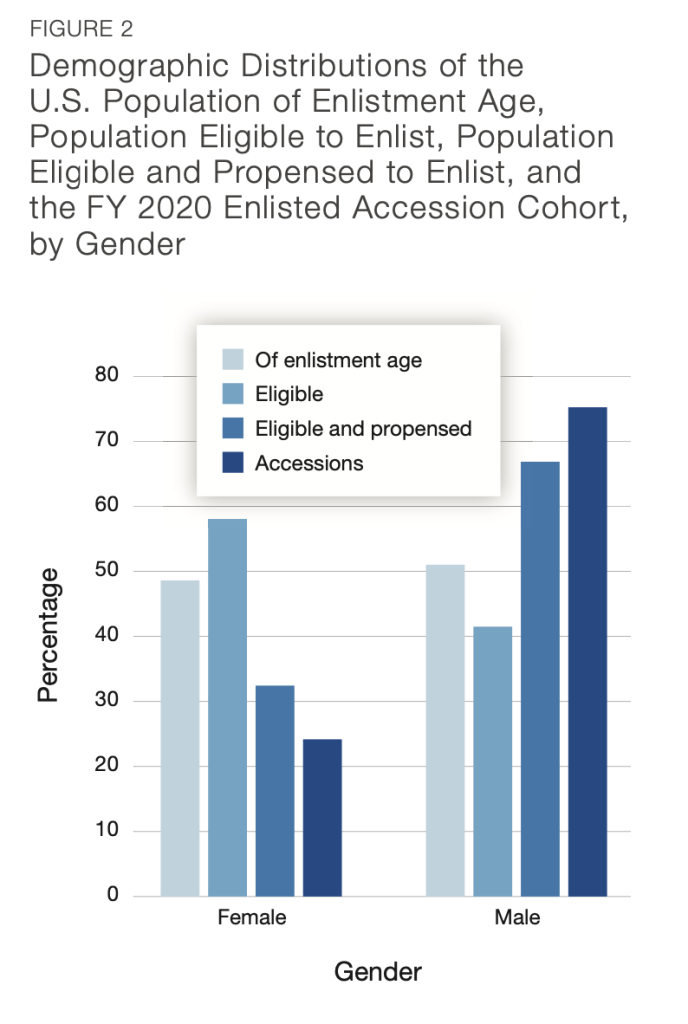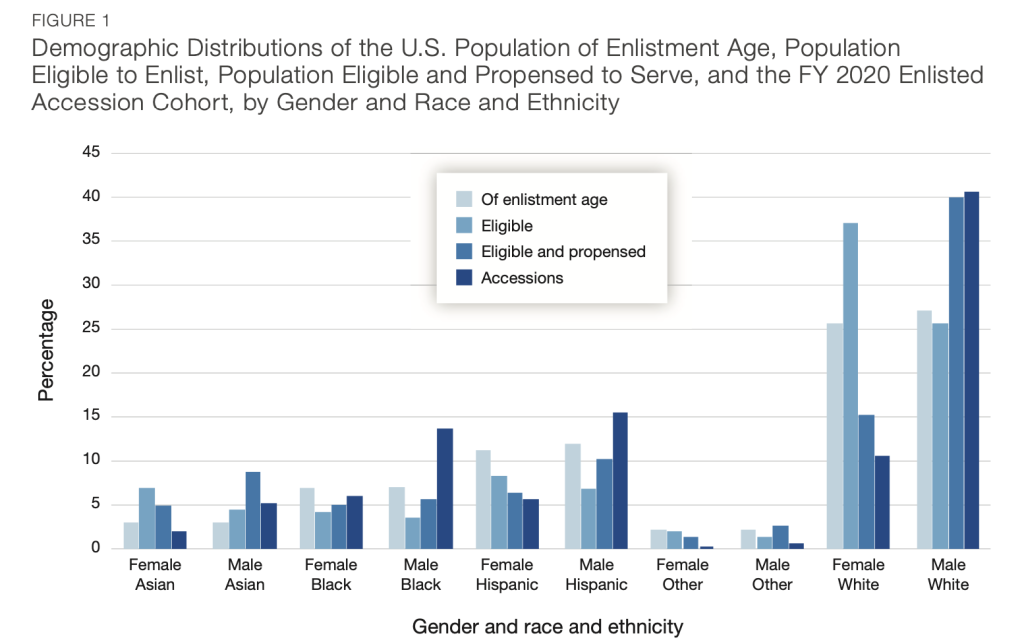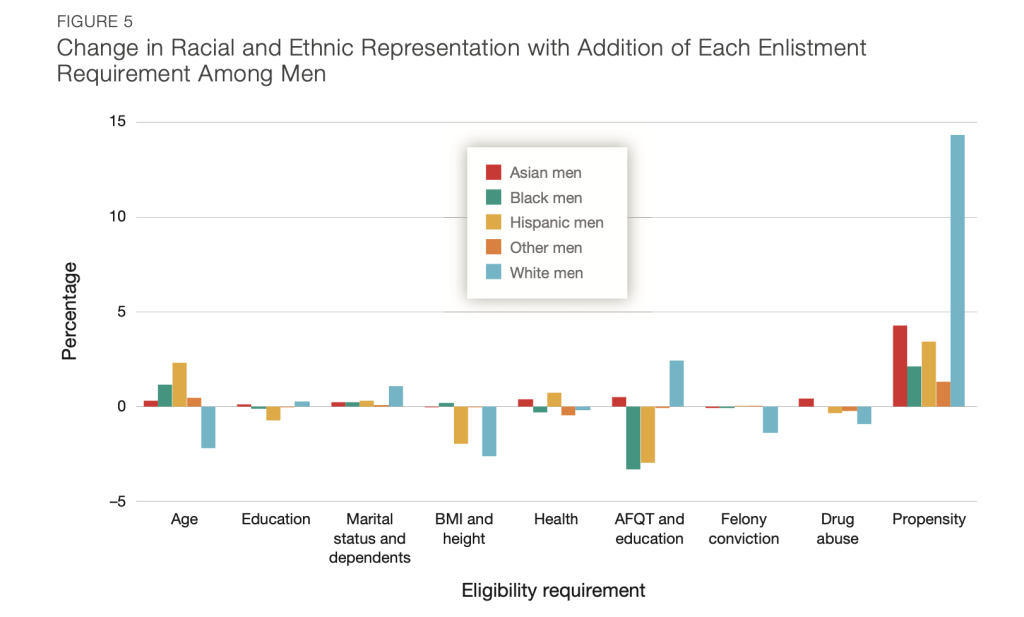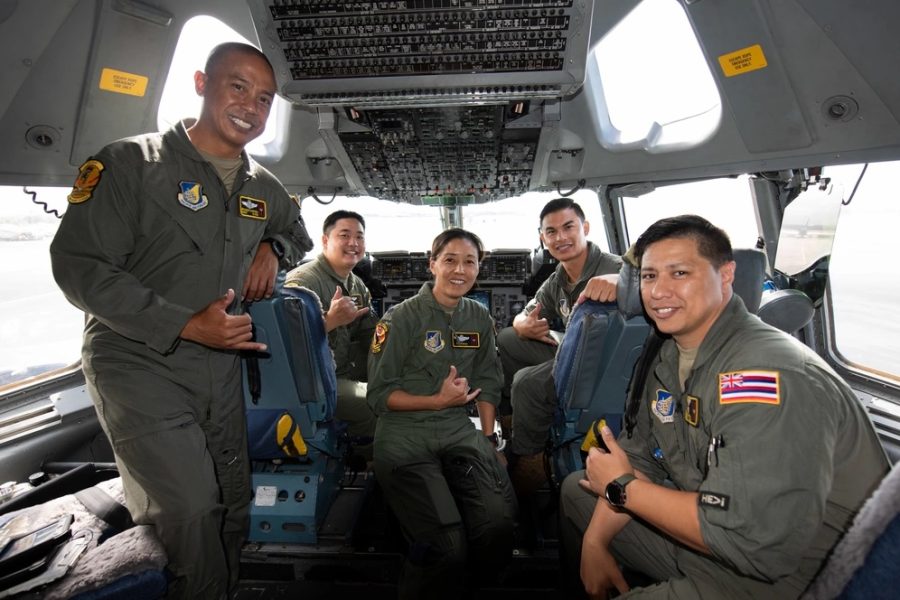As Air Force leaders strive to make the service more diverse, a new study suggests they can do a better job of understanding the barriers for entry to female or minority recruits. Instead of analyzing the accession rates and challenges for individual demographic categories such as race, gender, and ethnicity, the Air Force can learn more by considering those categories holistically, researchers with the RAND Corp. wrote in a recent report.
“This report shows some examples where, if you look at just gender or an entire racial category without breaking it out by gender, you miss certain signals that are important,” Louis Mariano, a senior statistician at RAND and one of the study authors, told Air & Space Forces Magazine. “And if you miss those signals, you miss how to address those signals.”
The study analyzed eligibility to serve, propensity, or willingness, to serve, and accession rates broken down by the various combinations of racial, ethnic, and gender groups. The study also analyzed the accession rates of the various demographic groups broken down by source: enlisting, Reserve Officer Training Corps, Officer Training School, and the U.S. Air Force Academy.
Gender is one example of how accession rates differ within larger demographic groups. One chart in the report shows that the percentage of Airmen who are female and enlisted in fiscal year 2020 is smaller than the female share of the eligible and willing population.
However, a second chart that accounts for racial and gender differences shows that Black women who join the Air Force make up more than their share of the eligible and willing population, a difference that goes unaccounted for when gender is the only category being studied.
“If we just report on all females, we’re missing the part of the story that Black females are actually exceeding their eligible and propensed population when it comes to enlisted accessions,” Mariano said. “We miss parts of the story if we collapse that way.”


The impact of specific barriers to entry also varies among demographic groups. For example, the study found that the Armed Forces Qualification Test and education requirements disqualify many Black and Hispanic men, while lack of propensity to serve affects many otherwise qualified White and Asian men.
More detailed analysis also shows differences in minority representation among sources of accession. For example, Hispanic men were found to have entered the U.S. Air Force Academy at a lower rate compared to their share of the eligible and propensed population, but the opposite was true for how many entered via Officer Training School and Reserve Officer Training Corps.
Mariano cautioned that much of the data in the report comes from just one fiscal year, and the patterns found in that year may not extend into others. The Air Force will need to look at the intersection of race, ethnicity, and gender long-term to generate the most insightful analysis, so RAND built an app for the service to continue to visualize its demographic data going into the future.
“We built the app to do it ourselves and then we made it so that the Air Force can run it again for continual monitoring,” Mariano said.

The app and report arrive in the midst of a long-term effort to improve diversity across the Air Force and the military writ large. Fostering a more diverse force could help address the military’s widespread recruiting troubles, and officials say a force with more diverse backgrounds can generate more innovative solutions to complicated national security challenges.
“It is a strategic imperative that we have and raise an army that is reflective of our nation and reflects the core values for which our nation was founded,” Gen. Jacqueline Van Ovost, the head of U.S. Transportation Command, said in 2022.
In the Air Force in particular, past RAND studies identified that women and minorities are less represented in rated career fields (such as pilots), and more likely to be in fields with lower promotion rates, which contributes to a lack of diversity among the branch’s senior leaders. A 2018 study of undergraduate pilot training called for increasing the number of minority and female candidates entering pilot training. RAND’s most recent study noted the importance of focusing on diversity in accession, since it is the gateway for most military careers.
“Because most military personnel begin their careers at the entry-level pay grade and positions are filled by promoting from within, achieving diversity at the point of accession is critical to growing and maintaining a diverse workforce across all pay grades,” wrote the authors. “A lack of diversity at accession limits the pool of diverse individuals who can be promoted to higher ranks.”
Some of the challenges which contribute to barriers for specific minority groups, such as income inequality and high school graduation rates, stem from larger societal issues that are outside the Air Force’s control. But by better understanding the barriers for possible recruits, the service could create effective solutions for lowering those barriers.
“What the report can tell the Air Force is where to think about the future,” Mariano said.
